Bad Girls
She’s just too mean.
That’s the comment I heard from an agent about the protagonist in the manuscript that I was pitching about nine years ago. That’s fine, I thought. Different strokes, right? Then I heard it again from a different agent that I had queried: “She’s so mean. It makes me not care about what happens to her.” After receiving a similar note from yet another agent—followed by a “Why is anyone even friends with this chick” #realtalk remark from a trusted friend who had agreed to read my pages—it was abundantly clear that there was a thread poking out and that I needed to pull it.
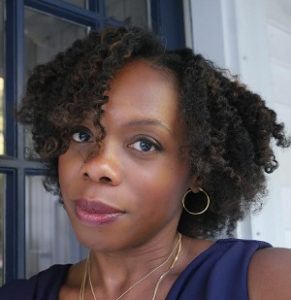 The character they were all talking about was a teenager, 17, and the undeniable Queen Bee at an all-girls, boarding school in Vermont. The fact that she was carrying a terrible secret that would destroy everything that she had come to be did nothing to soften these earlier readers’ views of her.
The character they were all talking about was a teenager, 17, and the undeniable Queen Bee at an all-girls, boarding school in Vermont. The fact that she was carrying a terrible secret that would destroy everything that she had come to be did nothing to soften these earlier readers’ views of her.
They thought she was selfish, cruel, manipulative, and unapologetic about all of it. Might I just say again that the character is 17 years old? It’s not exactly deviating from the general script to have a self-absorbed teenager moving through the room like she’s the only person that matters. That’s the part of the character that fascinated me most: her uncharitable side. I wanted to peel away some of the layers of her awfulness and discover what fuelled it, find what made this person so loathsome, because that’s where the story lived—beneath her thorny skin.
Still, I decided to pull apart this character to see if the “too mean” thing was causing a legitimate problem. To do this meant looking at other characters in books that conventional wisdom held out as being bad, unlikable, and downright despicable, but from whom the reader simply could not turn away.
This research brought me to an interesting conclusion: the key to making a good “bad” character is making them real and relatable. Your reader doesn’t have to like what your protagonist does or support the choices the person makes, but if there’s a kernel of verisimilitude, you’ve landed a hook in them. If there’s something real and relatable about the character’s behavior, they are intrigued enough to keep reading, to care about what happens next. And ultimately, that is what turns pages, the lure of what happens next.
My deep dives into antiheros in fiction also highlighted another fascinating but unfortunate truth about unlikeable characters. Women are not afforded the same rights as men to be detestable. (Surprise, surprise.) Male protagonists are given the space to be deeply flawed. They are allowed to be complicated. They can be wounded at their core and driven to do no good, very bad, terrible things (think: Oscar Wao in The Brief Wondrous Life of Oscar Wao, Nick in Gone Girl or Jay Gatsby in The Great Gatsby). Please.
They can even be complete psychopathic killers (Patrick Bateman in American Psycho or Tom Ripley in The Talented Mr. Ripley or Dexter Morgan in the Dexter books series) and readers still show up for them, compelled, desperate to know more. Now, if the protagonist—TWIST!—is a woman instead of a man (more specific, a white man) the game’s changed and the likeability factor gets weighted differently. Hubris, what’s that? This woman is self-involved and annoying! Wounded and spiteful? More like whiny and annoying! Flawed, misunderstood? Well, she may be emotionally scarred, but she’s so annoying!
It’s measuring up women against an impossible yardstick that regrettably reflects the one that is used in real life. It’s unfair and ridiculous. Why can’t these dreamed-up women be as knotted and broken and wicked and straight-up DGAF as their male counterparts?
Think about the strong female characters in literature that you despise—beyond the supposed “annoying” claim—but still cannot forget. Sula and Madame Bovary from their respective eponymous novels, Cersei Lannister from the A Song of Ice and Fire epic fantasy series, Catherine Earnshaw of Wuthering Heights, Cathy Ames of East of Eden, Amy Dunne of Gone Girl, and Becky Sharp in Vanity Fair, to name a mere few.
These women are moving through life, making choices, chasing a pressing need, scheming and clawing over obstacles that get in the way of fulfilling that need, and they are doing all of this in ways that might make our blood boil and drive us to toss the book across the room, but there we are…riding along with them, so curious about what next and why.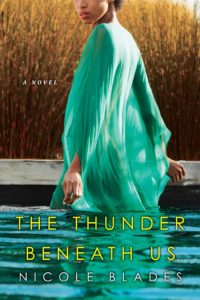
We don’t need to be friends with these women, in fact I stand by the idea that it’s even better when readers don’t like a character or don’t like the choices she makes, because it’s an opportunity to delve into another side of the human condition that, based on your own morality and “normalcy” boundaries, you might never really get a chance to examine. It’s much like how writers have long been told to Write What You Know. True. But there’s also value in writing about what you don’t know. It moves you to research, ask questions, turn over the muddy rocks to discover what’s growing beneath.
And that’s exactly what I did with my too-mean girl protagonist. I dug deeper, found tangled roots that grounded her contemptible behavior in something real. This took time and clear thought. I’m talking years! I filed the manuscript away for a bit and worked on other things (heyyyy, The Thunder Beneath Us!), but with the full intention of returning to it. I couldn’t let it go; I just wasn’t finished with this story yet.
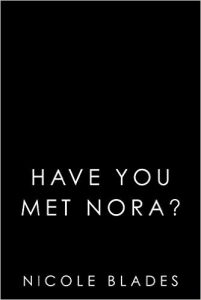 In the end I decided to grow up the protagonist from Queen Bee teenager into a flawed and complicated young woman negotiating very tangled relationships, which also called for my building a whole new world around her. The essence of the story remained, though. It’s about identity and the lengths we’ll go to construct and protect out ideal selves. And I am so very thrilled to say that the story is now a novel called Have You Met Nora? to it be released (finally, finally!) on October 31.
In the end I decided to grow up the protagonist from Queen Bee teenager into a flawed and complicated young woman negotiating very tangled relationships, which also called for my building a whole new world around her. The essence of the story remained, though. It’s about identity and the lengths we’ll go to construct and protect out ideal selves. And I am so very thrilled to say that the story is now a novel called Have You Met Nora? to it be released (finally, finally!) on October 31.
——
Nicole Blades is a novelist and freelance journalist. Her next book, HAVE YOU MET NORA?, will be released Oct. 31. Her latest novel, THE THUNDER BENEATH US, is available now wherever books and ebooks are sold. Catch Nicole and her sister Nailah on Hey, Sis!, their brand new podcast about women finding their focus and place in business, art, culture, and life.
- Author Website: http://nicoleblades.com
- Facebook: https://www.facebook.com/WriterNicoleBlades
- Twitter: https://twitter.com/NicoleBlades
- Instagram: https://www.instagram.com/nicole_blades/
Additional social media platforms such as Goodreads: https://www.goodreads.com/author/show/774452.Nicole_Blades
Category: Contemporary Women Writers, On Writing






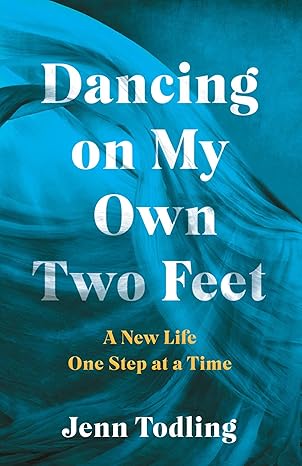





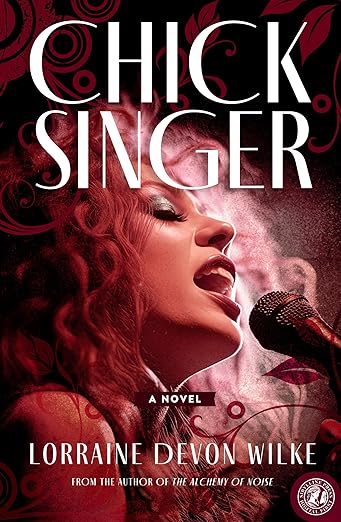
















Great piece. I was thinking about Scarlett O’Hara in Gone with the Wind. Now talk about unlikable! But you can’t stop yourself from following her antics.
Yes on Scarlett! Frankly, my dear…
Her name came up when I asked folks to name some “unlikeable” female characters that they just love to hate.
Hi, Nicole. I’m wondering whether you also untangled this issue from a racial perspective. Was there any evidence that people were responding to a trope of ‘Angry Black Woman’ in their responses to this character?
Oh, man. Listen. This is a whole other discussion, Deedra. But short answer, I wondered about this, for sure. But this character is passing as white, so I wasn’t 100 percent convinced the Angry Black Women trope was at issue this time around. But, yes, the racial perspective is a real and knotted discussion.
Thanks for the comment!
I LOVE this! Some of the most fun I’ve had as a writer has been to take unloveable characters and make them into memorable ones, who the reader actually root for. You’ve nailed what the author has to do, and I’m so glad you found a home for your story. Good luck with everything.
Thank you! It’s a challenge, but it’s one that makes worthwhile storytelling, I say. 🙂
I, too, had to rewrite a female protagonist to make her more palatable. I didn’t like having to do it at all, though in the end it gave her much greater dimensions. Some of my readers have described having a love/hate relationship with her, and only one reviewer that I know of (a blogger) went on and on about how much she HATED her. I believe she actually used all caps. 🙂
I’ve read too much fiction where all the women are nice and supportive and always get along. Though I’ve met numerous women who are like that, my real-world experience is more complex and nuanced. I’m fascinated by the complexities and enjoy stories about women who aren’t so “nice.” A recent one that comes to mind is Where’d You Go, Bernadette? by Maria Semple. Loved that book!
Ah, yes. The ol’ “love/hate relationship” thing. I’ve heard that quite a bit with my last book THUNDER. And I’ve seen a few “I hate her” + “she’s so selfish” reviews on Goodreads and such. I would be lying if I said those digs don’t affect me. It doesn’t make me question my work or the characters–let’s not get carried away! Hahah! Everyone has an opinion, is what I say. But like you I think that it’s more realistic to have female protagonists who are layered and complicated and who have some unlikeable qualities about them. That’s how real human persons are–male and female!
Thanks for the comment, Nadine! Good luck with your complex characters.
Nicole – I enjoyed your article. I enjoyed reading your book’s description even more, sounds right up my alley. Would you might telling me who you used for your cover? I am need in of a cover artist for my first book, but am floundering. Your cover did an excellent job of piquing my curiosity.
Thanks and even more thanks, Olivia! My book cover was done by my publisher’s art department (Kensington). They did the one for THUNDER too. And I adore both covers. (I was so fortunate to land a two-book deal with them.) I wish I had suggestions for you, but I’ve never self-published so I’ve always had the publisher to thank for handling the book covers. Good luck to you! And again, thanks for reading this piece. So glad you’re interested in HYMN!
And Scarlett O’Hara! 🙂
Oh, yes indeed! Good one, for sure. Thanks for reading and for leaving a comment.